Welcome to Old School Month on Eternal Central. We’re looking at a different Old School 93-94 deck each day of the month. Today’s deck is Turbo Stasis, which is a combo control deck utilizing the legendary Alpha card Stasis.
There are a number of historical ways that Stasis has been utilized over the years, but in this build it is used as a forward leaning prison and lock component. This build strips away most of the one-for-one spot removal, in favor of establishing a battlefield favorable for Stasis to stall the board long enough for Black Vise to damage the opponent.
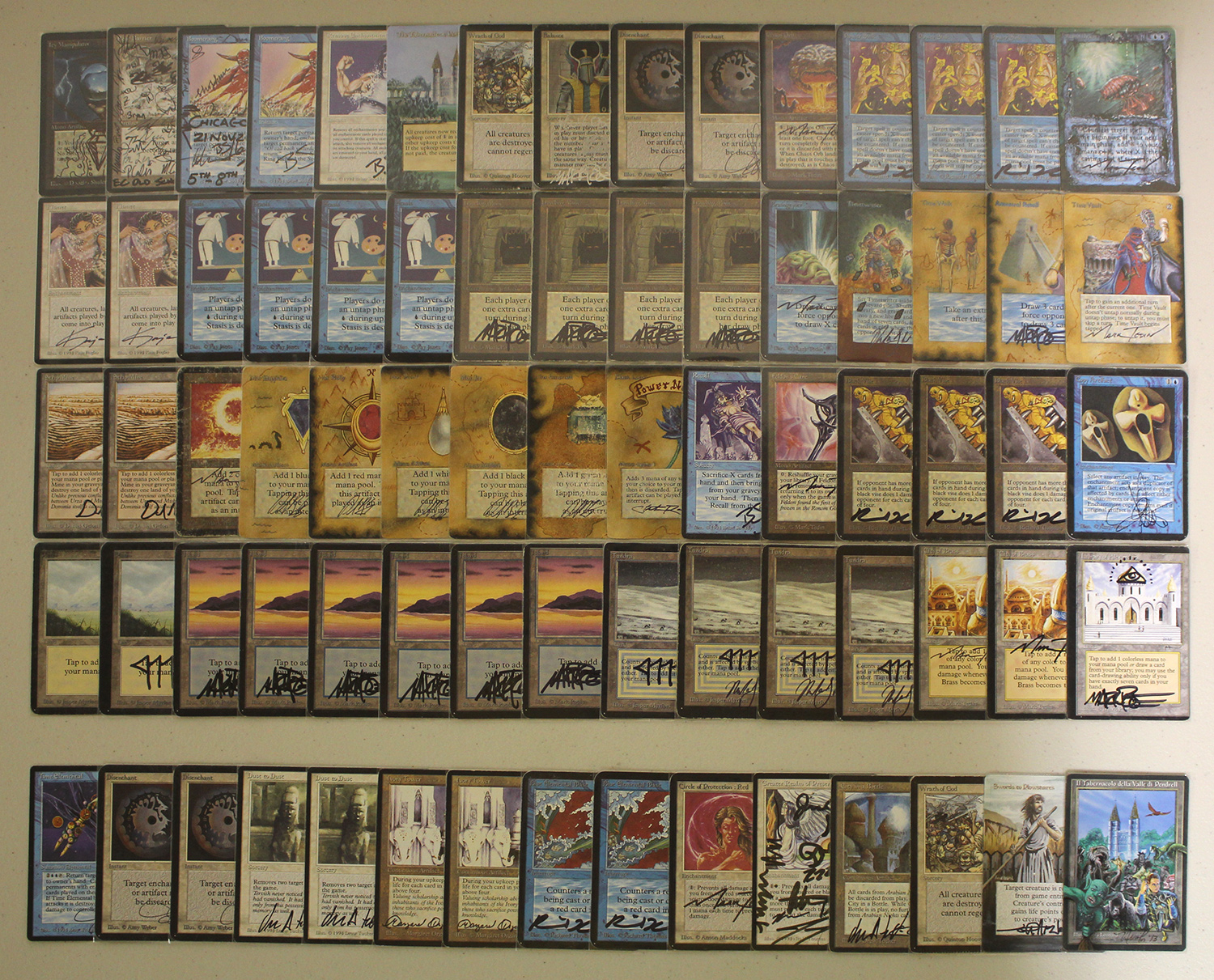
Constructing Turbo Stasis
Stasis is a card that can be used for tempo, or as a soft-lock component, and that is the direction here. It’s a card that is far more potent the more you build around it.
Blue-White is the color combination that offers the most efficient removal, countermagic, and the most powerful draw spells, so it is a natural starting point when tinkering around with Stasis decks.
Green is an interesting option as a splash color, with or without the White splash. Green offers Fastbond, which works quite nicely with Stasis, and especially well with Howling Mine. The more excess lands you draw from Howling Mine, the more Fastbond will enable you to play, in order to accelerate out more lock components, or more lands to potentially pay for Stasis longer. Sylvan Library is a natural addition as well if splashing another color, as this not only helps smooth out draws, but it has additional synergy with Howling Mine, digging deeper with each draw step.
Creature Choices
Time Elemental is historically found in Stasis decks, but in this build I’ve chosen to relegate it exclusively to the Sideboard, in order to create dead draws for the opponent in game one. Bringing in Time Elemental out of the sideboard, after the opponent has removed all of their creature kill, is a more enticing option.
Likewise, Serra Angel has fine synergy with Stasis (because Serra need not tap to attack), so it is another candidate for main deck or sideboard inclusion, especially if you wish to sideboard in to a more aggressive strategy for post-sideboard games. A local friend in Chicago has been known to do this with his Stasis deck, and bring in not only Serra, but also Savannah Lions and Serendib Efreet, morphing in to a Blue-White tempo deck.
Draw Engines
The standard operating package of blue draw spells like Ancestral Recall, Time Walk, and Braingeyser are all present, as is Timetwister, which is at its best in combo decks.
Howling Mine is the heart of the draw engine for Stasis decks, because not only does it help find additional land drops (to pay for Stasis), but it can also help keep your opponent’s hand full, which works well if you use Black Vise as a kill condition. The opponent is less likely to be able to take advantage of these extra cards if they are locked down by Stasis. Recall is great as a recursion mechanism, and is often fueled by excess cards from Howling Mine.
Control Elements
This is yet another deck that could play the Icy Manipulator/Relic Barrier/Howling Mine/Winter Orb package. Howling Mine and Winter Orb were originally printed as “Continuous Artifacts,” meaning they would work continuously as long as they were untapped. The Oracle wording of each has been updated over the years to reflect this original intent. Both Icy Manipulator and Relic Barrier can be used to tap your own Winter Orb or Howling Mine. In this version we just have a single Icy and a single Relic Barrier, for use in tapping the opponent down, and tapping our Howling Mines occasionally, to get ahead on cards when the game calls for it. Icy Manipulator is great at mucking up the battlefield and forcing the opponent to expend more threats to it, but at 4 mana it can often be costly for this deck, so 1-2 copies is probably most appropriate if not going all-in on the artifact package described above.
White enables you to play a ton of the most efficient spot removal available in 93-94, if you wish to play it. But it doesn’t necessarily get you ahead in the game to trade one-for-one constantly, so in this we’ve trimmed much of the spot removal, and focused more on cards that will help quickly establish the Stasis soft-lock.
Kismet is a unique and powerful card from the Legends expansion, which makes all of the opponent’s lands, creatures, and artifacts come in to play tapped. This is an important effect, because not only does it slow the opponent down each turn, but when used in conjunction with Stasis, the opponent cannot effectively do anything or add any relevant resources to the board until you can no longer pay for Stasis. All of their permanents will come in to play tapped, and will not untap as long as you can manage the upkeep requirement of Stasis. The 4 mana casting cost means you do not want to draw too many of these early and have them potentially get stuck in your hand, so I like 2 copies here.
With blue comes countermagic, and aside from Mana Drain, the best countermagic for hard core Stasis decks is Power Sink. Not only can it protect you from a range of spells, but it can tap the opponent down, and then allow you to untap and slam a Stasis in to play, so it is often much better than a regular Counterspell for this strategy.
Candelabra of Tawnos is another card that merits examination. It can help untap Islands to continue to pay for Stasis, but it would occupy one or more slots in an already-tight deck, and doesn’t do much of anything else to disrupt the opponent, or facilitate a combo. It merely helps once you already have Stasis in play, so it is probably not going to make the cut in most builds, due to the sheer numbers game.
Constructing a Mana Base
Blue mana is at a premium in this deck because of the cost of paying for Stasis turn after turn. Tundra is an obvious 4-of, and after a number of basic lands, I like to add a couple copies of City of Brass. This casts your white removal spells, but also taps for blue, functioning as Tundras 5-6.
Strip Mine in mainly included as a tactic to handle Library of Alexandria, because while this deck is well situated against other blue decks, one of the most common ways you can lose if to an opposing Library if you do not get any of your engines or disruption online quickly. Having a couple of copies of Strip Mine can help guard against that exact scenario.
While they technically do not provide mana, Maze of Ith and The Tabernacle at Pendrell Vale are potent options for Stasis decks. Maze can repeatedly help fend off a creature, while Tabernacle can tie up your opponent’s mana. If their mana is already being held down by Stasis, and then you drop a Tabernacle in to play, it is unlikely they’ll be able to pay for their creatures for long, turning Tabernacle in to a free Wrath of God, which sticks around on the battlefield. Consider playing Maze and anywhere from 0-3 copies of Tabernacle in your 75, should you have access to them.
Designing the Sideboard
If you are not using some kind of transformational sideboard plan (bringing out the Stasis combo, and bringing in a bunch of creatures, for example), the best use of the sideboard is to tailor your removal for the most important threats the opponent will present.
Against aggressive decks I sideboard some mix of Swords to Plowshares, Wrath of God, City in a Bottle, and Ivory Tower. As an extension of this, Blue Elemental Blast and Circle of Protection: Red must be considered when facing burn-heavy decks. Maze of Ith and The Tabernacle at Pendrell Vale very powerful cards that don’t cost you any mana (but merely a land drop), and can each have a huge repeatable effect on the board when playing against aggressive decks.
Disenchant and Dust to Dust are great against artifact-laden decks, as well as against Underworld Dreams decks (which can be a difficult matchup, and require you to remove Underworld Dreams from play as soon as possible).
Playing Turbo Stasis
The kill conditions that synergize best with Howling Mine are Black Vise and Feldon’s Cane. Opponents will generally have a decent number of cards in hand if Howling Mines are drawing both players cards, and once you have played a Stasis, any Vises in play will start to tack on damage turn after turn.
Feldon’s Cane is a nice addition because it helps recycle all of the removal and counters and draw spells you’ve already played in a game, and assures you that the opponent will likely run out of cards before you do.
Copy Artifact can double as a Black Vise to help kill the opponent faster, or can simply copy the opponent’s best artifact in play, like Jayemdae Tome. I’ve found that the first copy of Copy Artifact is better than the fourth Black Vise, because it simply has more utility early in the game, and once you are in the middle or late game, it is likely to come down as a Black Vise anyway.
This deck plays like a combo-control deck, and you’ll be carefully managing your turns and mana to balance between keeping threats off the board, and racing to establish a Stasis soft-lock where you’ll be able to damage the opponent, and then hopefully bounce your Stasis on the opponent’s end step with Boomerang or Remove Enchantments.
Time Vault is one of the best cards in here, because of how it can interact with Stasis. Normally, if you are unable to continue to pay for Stasis, it will be sacrificed on your next turn during your upkeep, after your untap step, meaning you will likely be tapped out. This will then enable the opponent to untap all of their cards, and do their worst. Time Vault changes this equation, because you can use it to skip a turn while you have Stasis out (and the opponent locked down), and then on your next turn you can let Stasis die (while tapped out), and then tap Time Vault to take another turn. This means you will get to untap on the Time Vault turn, and then go off with more draw spells, removal, or another Stasis. The extra turn(s) you give the opponent can also help in the damage race, especially if you have one or more active Black Vises in play dealing them damage.
Ten Opening Hands with Turbo Stasis
Here are ten randomly drawn opening hands with the deck (in order, and not manipulated in any way), and a few brief words with how I might look to play said opening hands.
Opening Hand 1

With mana, countermagic, and Kismet available, this hand is a slow but steady keeper.
Opening Hand 2
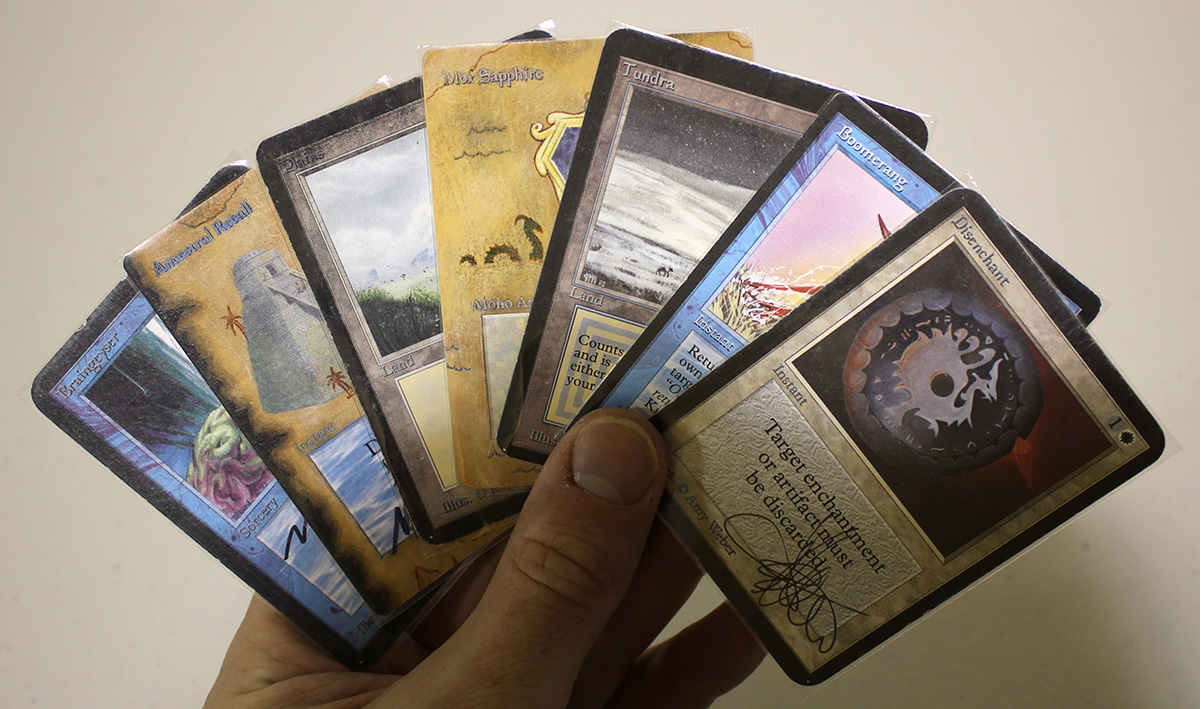
This hand features plenty of on-color mana, removal, and our best draw spells. This is a snap keep.
Opening Hand 3
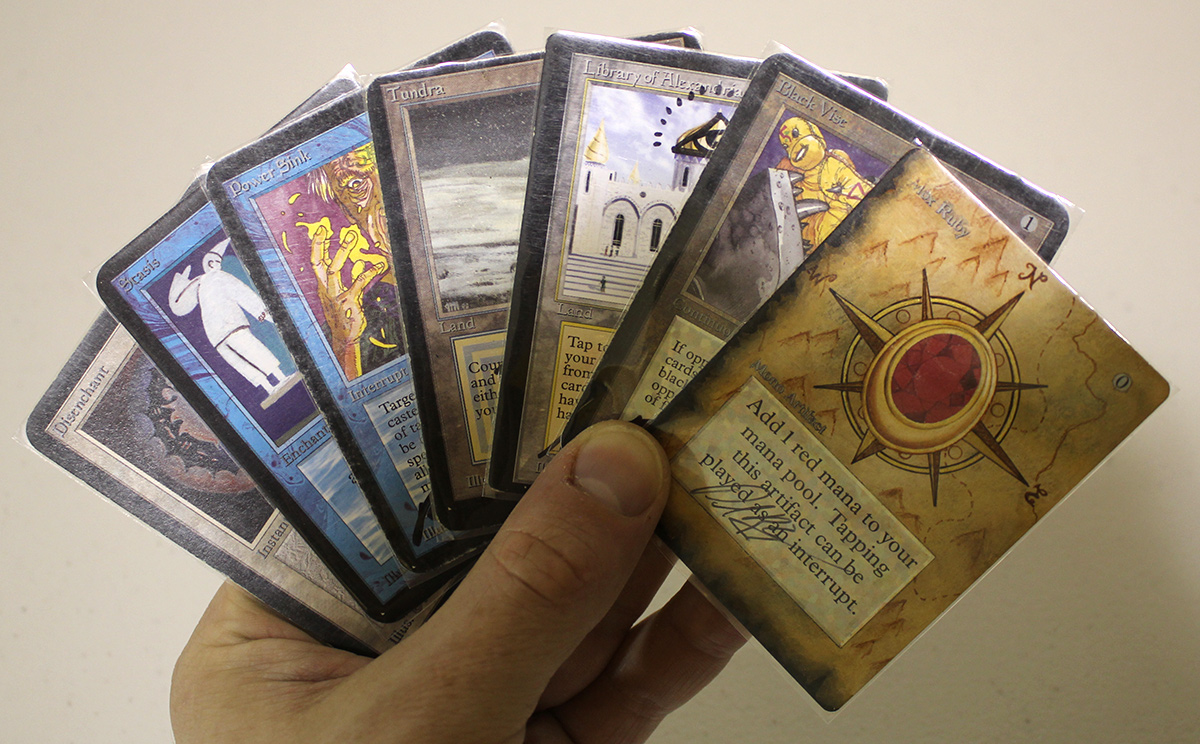
While this hand only has a single blue mana source, it features a couple of other mana, including Library of Alexandria. This is a keeper, and leads with Library on turn one, and can then follow up with a land and Black Vise on the next turn, while still milking Library until the opponent can find an answer.
Opening Hand 4
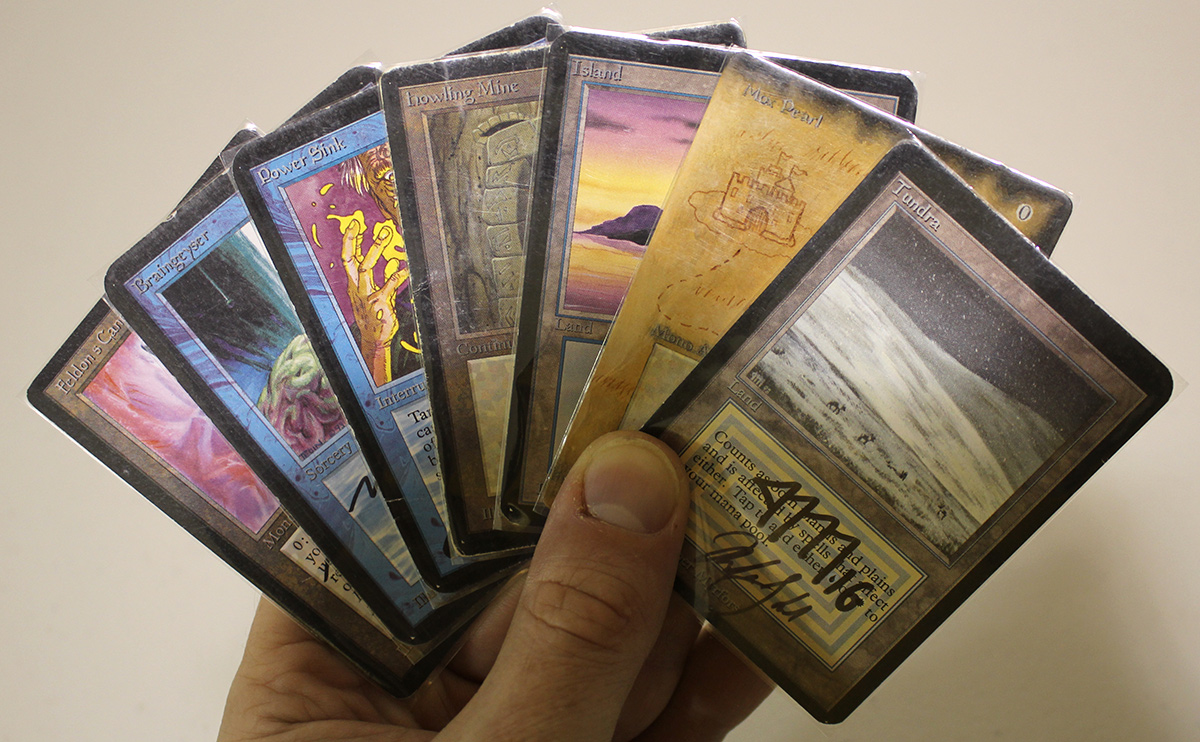
This is the first opener that can lead with a first turn Howling Mine, and this is a keeper. You can then keep making land drops and hold up Power Sink, and have Braingeyser to really get ahead on cards in a few turns. Feldon’s Cane can be deployed later when need be.
Opening Hand 5
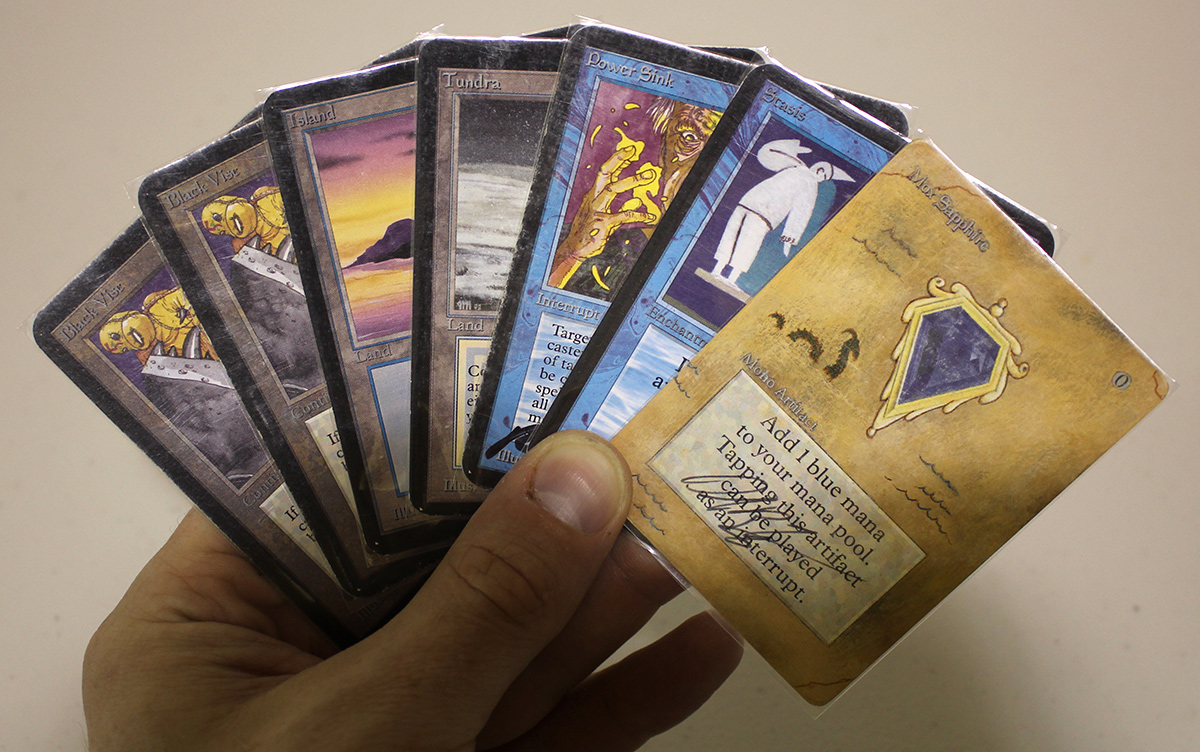
With plenty of mana and a piece of countermagic, this is good enough to keep. If you are on the play, the ability to play both copies of Black Vise on the first turn could be decisive. Even if the opponent is able to quickly get under them, we already have the Stasis in hand to tie up the board at some point, and to potentially help deliver a lethal chain of events.
Opening Hand 6
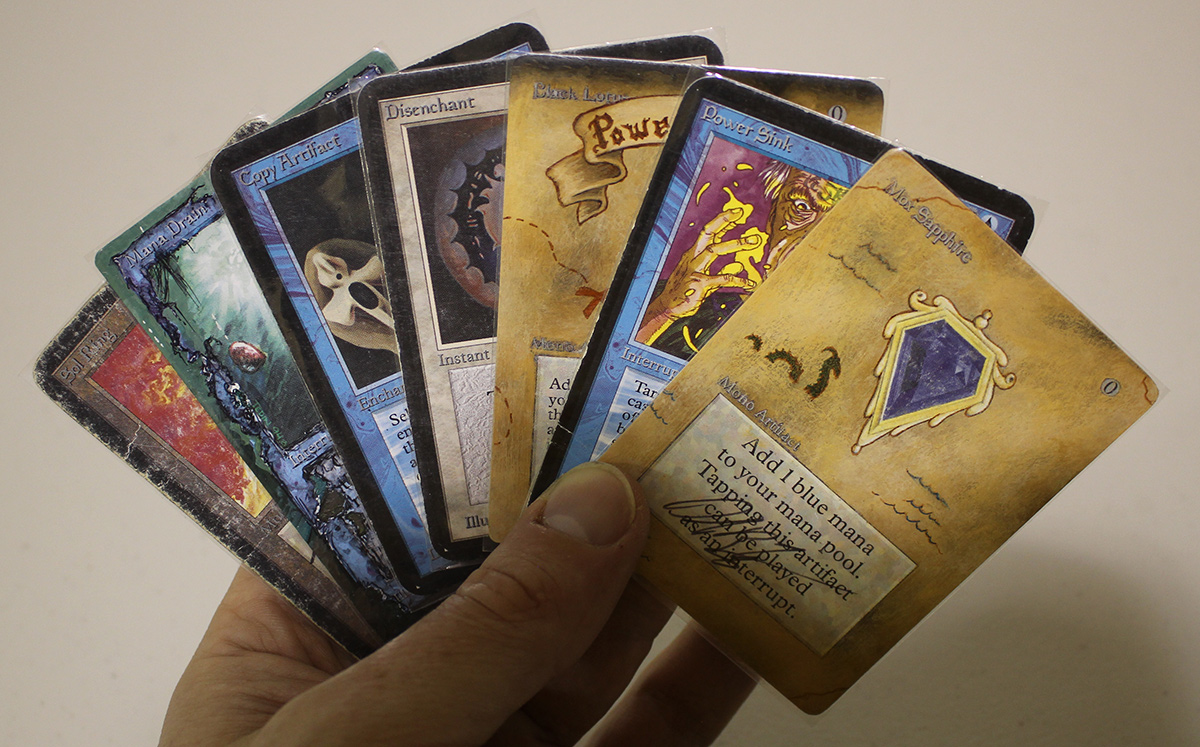
Even without a land, this hand has plenty of mana, and is probably a reticent keep. You can drop Sapphire and Sol Ring on the first turn, as well as Black Lotus (to use either Mana Drain or Power Sink in case of emergency on the first couple of turns). You can then Copy Artifact your own Sapphire or an opposing threat, should you need to. The multiple pieces of countermagic should buy you time to find more gas or control elements. Nearly draw from the first turn onwards is going to deliver you something you can use.
Opening Hand 7
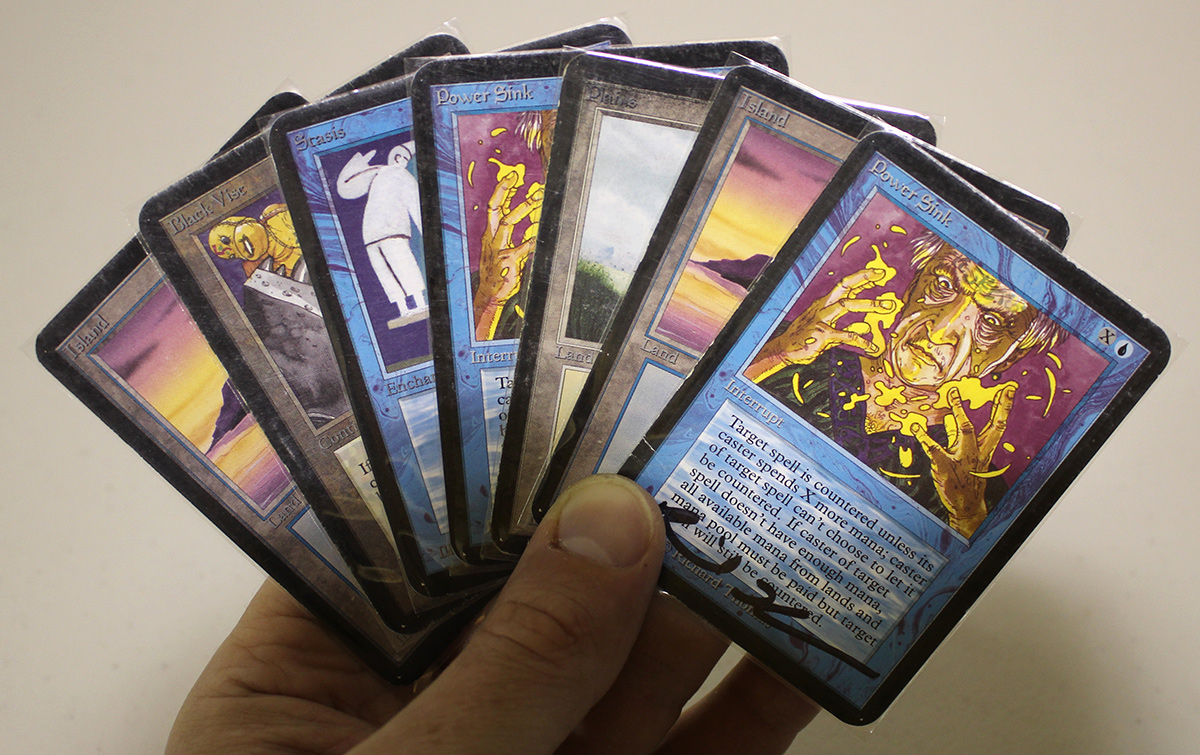
This is another slow but steady hand containing plenty of mana, countermagic, and a kill condition. Not impressive by any means, but keepable.
Opening Hand 8
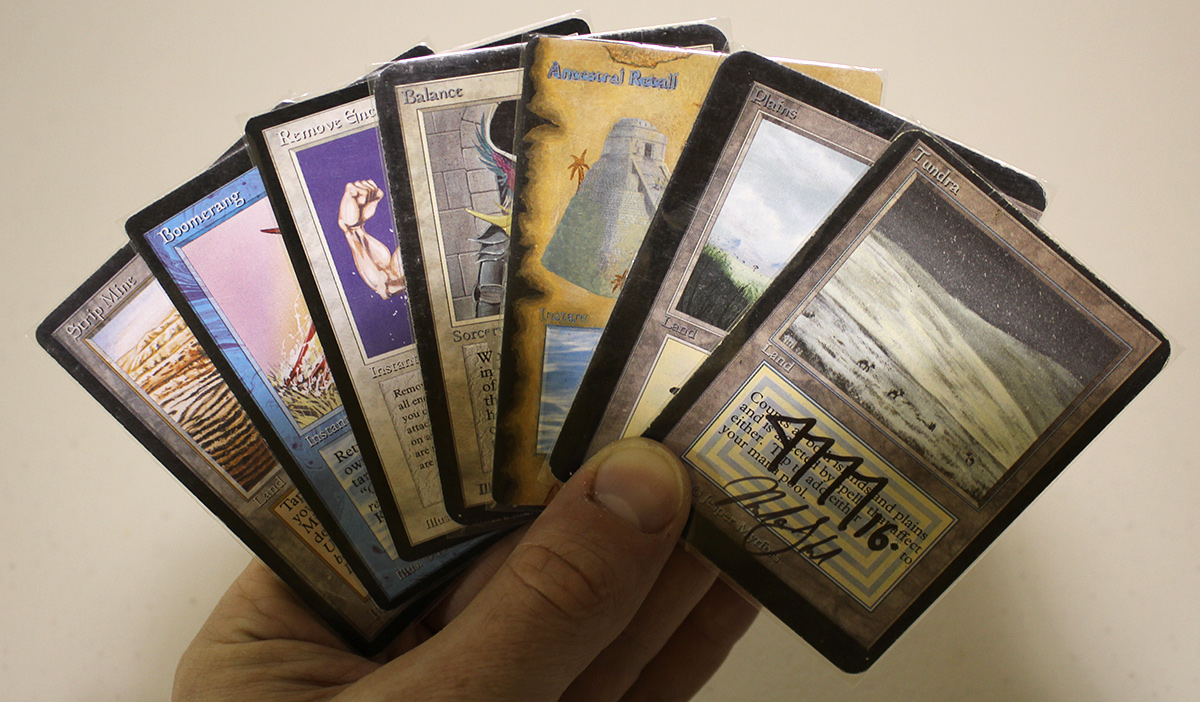
The Remove Enchantments in hand sticks out as useless early, but the Ancestral Recall, Balance, and three mana sources make this a keeper.
Opening Hand 9
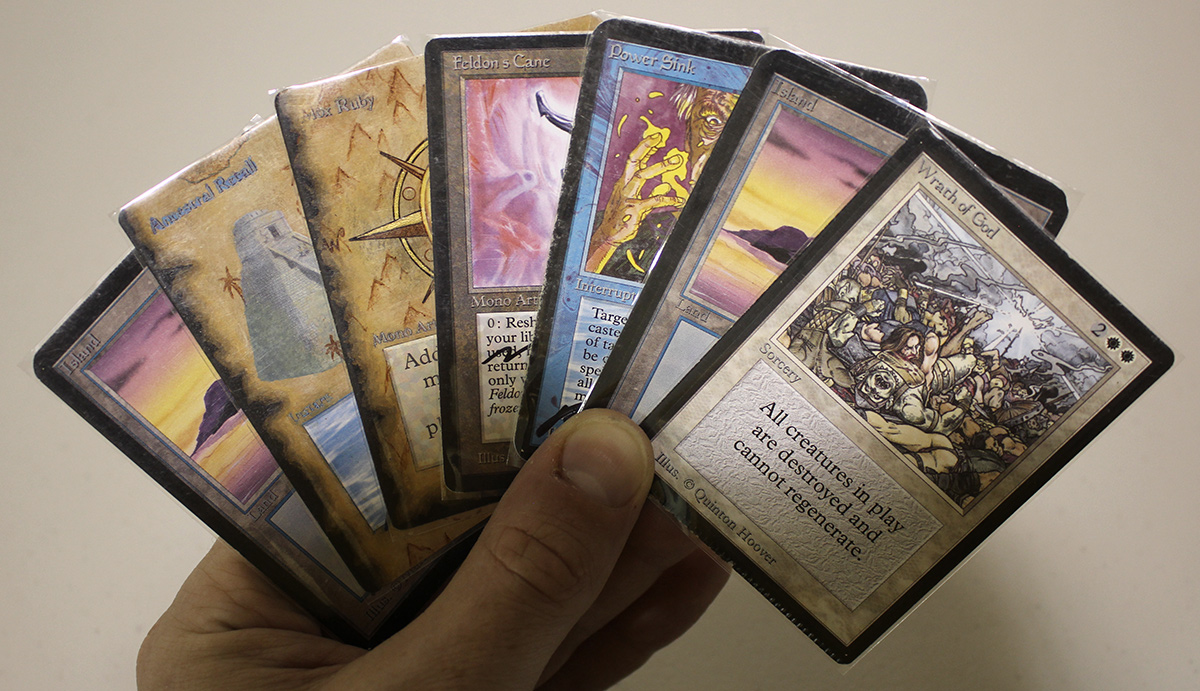
Similar to the last hand, this has removal, mana, and Ancestral, making it worthwhile. I’d lead with Island and Mox Ruby, and then pass the turn, holding up Power Sink. This gives you the option to Ancestral on the opponent’s end step, if they do nothing else relevant. Consideration should also be given to playing Ancestral on your first turn, if you are fearful of the blue-wielding opponent playing a second Island on their turn, and thus representing countermagic.
Opening Hand 10
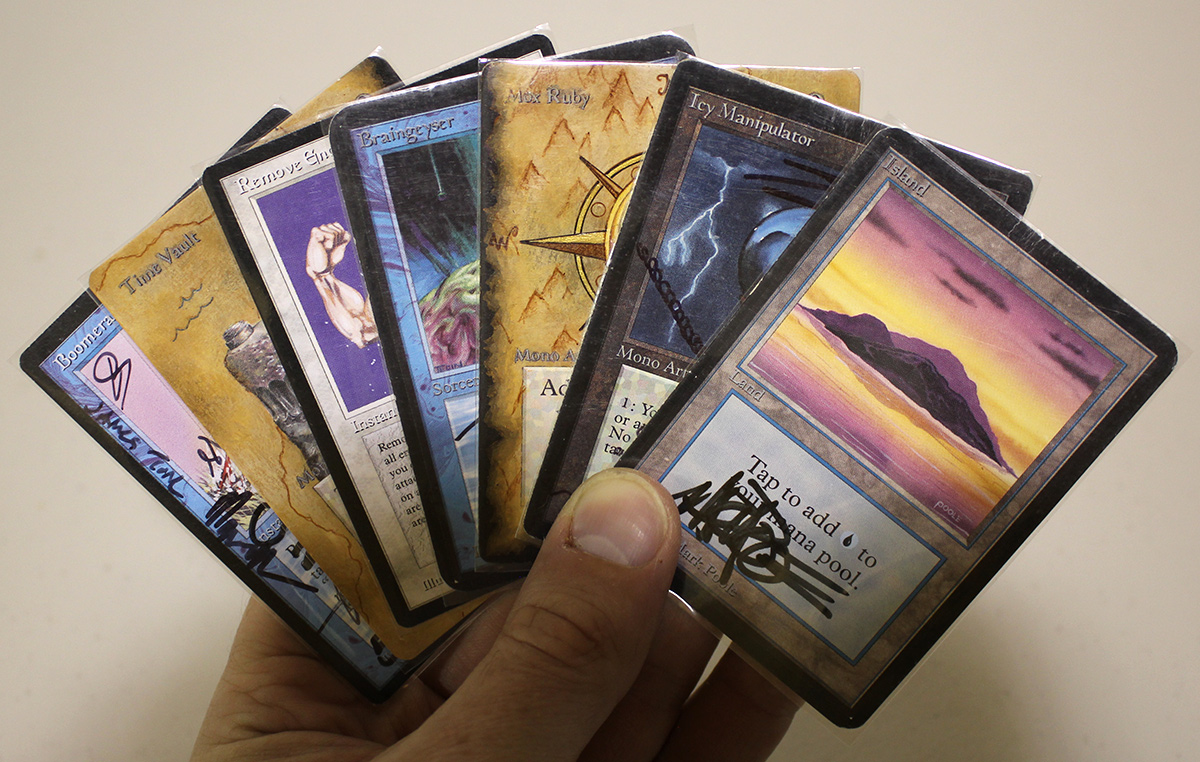
Lacking the mana to do much of anything besides cast Time Vault, this hand is an easy mulligan.
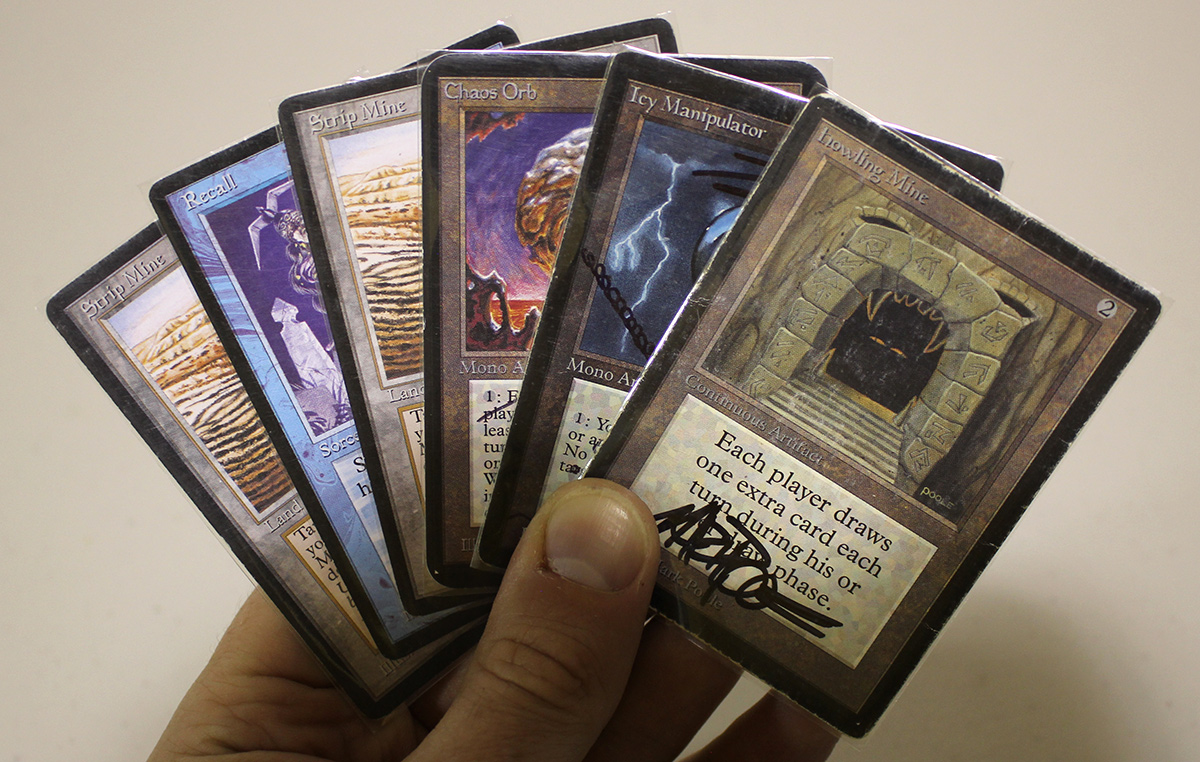
This hand has some nice tools in Chaos Orb and Icy Manipulator, but no on-colored mana. It does have enough mana to cast either Chaos Orb or Howling Mine on the second turn though, as well as Strip Mine protection from an opposing Library of Alexandria. I’d probably keep this hand, and then with the pre-game scry look for any mana source, and ship anything else to the bottom. I’d then try to play Howling Mine as soon as possible, in order to draw in to more mana and get the ball rolling with the rest of the hand.
Concluding Thoughts
Stasis occupies a niche place in Old School 93-94, and is one of the original combo-control decks in Magic. It can be built on a budget, trading away fast mana and powerful draw spells for cards like Land Tax and more cheap spot removal, to stay alive longer. It can also be built as a mono-blue deck, sporting more Boomerangs, and things like Unsummon and Time Elemental main deck. Experiment with different configurations and see what you like.
Stay tuned to Eternal Central for more sick 93-94 brews all month long. Thanks for reading.

